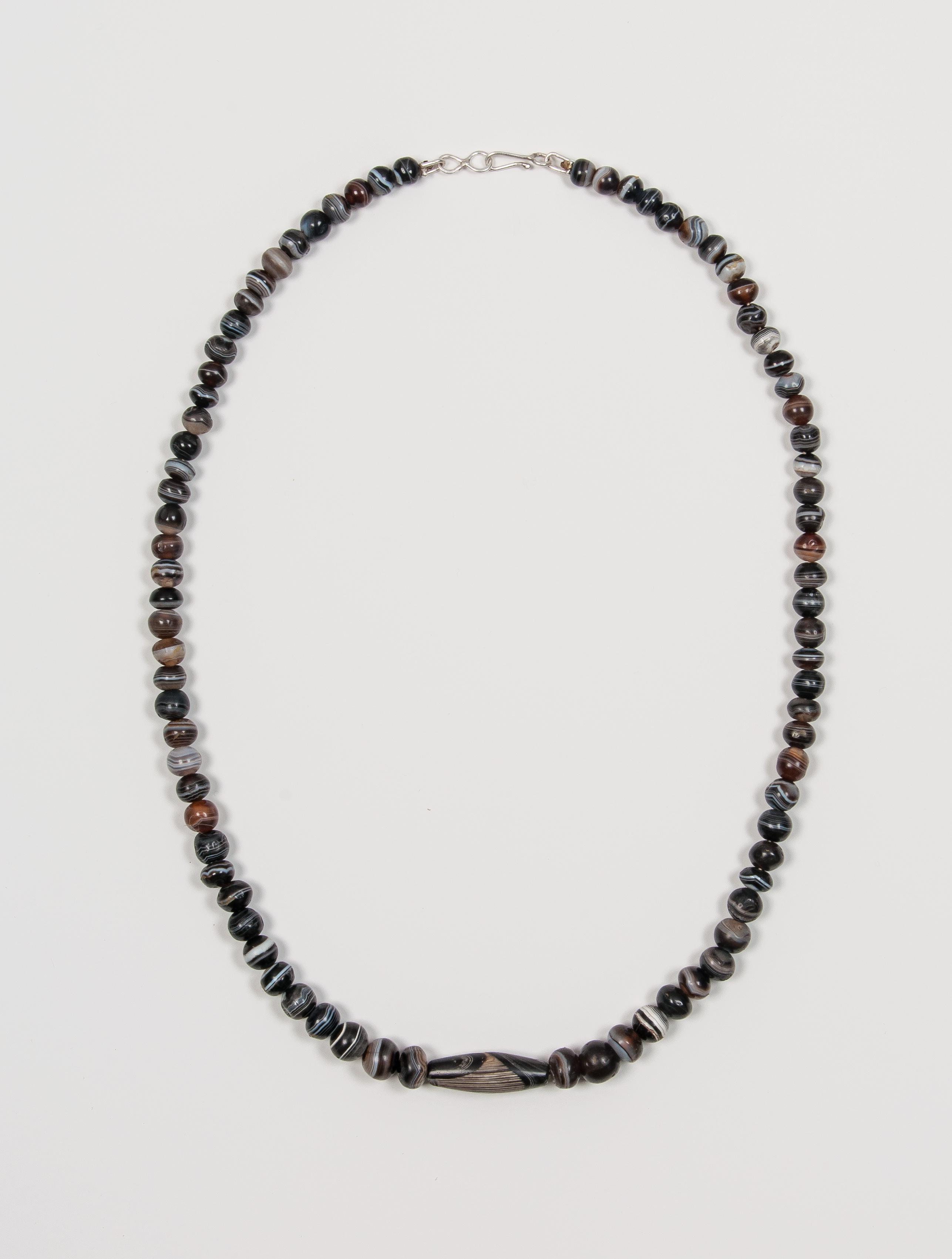Ancient Round Banded Agate Beads with Center Agate Barrel Bead
Collection:
Agate
Material:
Agate, Silver
Size:
The necklace is 23 1/8 inches (58.7 cm) in length. The necklace weighs 49.7 gm.
Price:
$2,750.00
A necklace of eighty round black agate beads with a central barrel bead with unusual layering. The central bead is 2.83 cm in length, 9.5 mm in width at the center and 5 mm in width at the ends. The drill hole diameter is 2 mm. The round beads graduate in size from the front to the back of the necklace. The pair on either side of the center bead is 6.5 mm in length and 1 cm in width. The diameter of the drill holes is 1.5 – 1.75 mm. The smallest beads at the back of the necklace are 5 mm in length and 6.5 mm in width. The beads are primarily black with white layers. There are brown layers in some of the beads and there are translucent quartz layers as well as clear quartz layers. All the beads are oblate spheroids, (an ellipse rotated around its minor axis), being wider than they are long. Although the initial impression is that the beads are round, that is to say, perfectly spherical, they have been deliberately made to be oblate spheroids so that they will look a certain way when all strung together. All have been drilled so that the banding is a right angles to the perforations. The patterning of the center barrel bead is remarkable. The banding is idiosyncratic with zones of parallel banding and surrounding zones where the banding is at an angle. It is apparently the result of layers being formed and then broken apart by geological processes with addition layering being laid down in the voids. This results in a rare and distinctive patterning that could be exploited by the ancient bead makers to make an unusually patterned agate bead. This was a unique and limited resource and it can be reasonably assumed that this type of bead was only produced in limited numbers before the special agate was exhausted. This bead has the additional benefit of having an “eye” pattern on one side. The ancient craftsmen who made these beads were consummate artists who understood how to maximize the aesthetic effects possible from the banding in the stones and how to utilize the shapes to enhance these effects. The beads come from the Swat Valley in what is now northern Pakistan. However, since this was on the Silk Road and beads were traded widely, it cannot be assumed that the beads were manufactured there. They are probably around two thousand years old.
